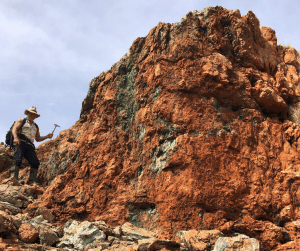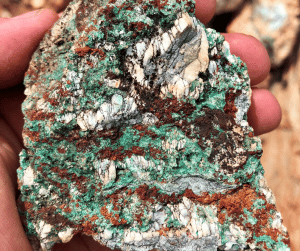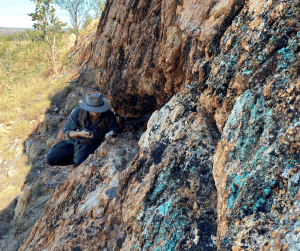Red metal demand for greener future
Copper, the illustrious red metal, has helped shape the history of humanity – the first metal ever used by humans to make metal tools for agriculture, construction, and other aspects of daily life. Today, little has changed about our reliance on copper, as it continues to be a critical component of current and future technologies.
Each time you switch on a light, use your mobile phone, or turn on a tap, copper is being used.
Geoscience Australia estimates that the average Australian home contains more than 90 kilograms of copper – included in everything from the electrical wiring to appliances to plumbing.
The reason copper is so widely utilised is thanks to its unique properties; an excellent conductor of heat and electricity, malleable and ductile enough to be shaped to any size or thickness, and highly durable and naturally resistant to corrosion. Electrical generators and motors, wiring, radios and TVs, air-conditioners and home heating systems are just a few of the everyday items that rely on copper to function.
Additionally, copper will play an important part in a more sustainable future as the world transitions to renewable energy – widely used in smart technologies, renewable infrastructure, and electric transportation.
The rising demand of copper
The Copper Alliance notes that a ‘pure electric vehicle’ (PEV) can contain more than a kilometre of copper wiring in the stator windings of its engine, as well as being a major component of EV batteries, inverters, wiring and charging stations.
Compared to traditional internal combustion engine cars, EVs use about four to six times more copper – roughly 83kg in total according to IDTechEx research.
With the total number of EVs projected to reach 7 million by 2025 – and 5 million charge ports required to support them – the demand for copper for EVs is expected to increase by 1,700 kilotons by 2027.
A bright future for Australian copper
Globally, Australia is home to the second largest reserves of copper, with close to 900,000 tonnes being produced in 2021 by Australian copper mines.
The Australian federal government forecasts an increase in copper export earnings of 2.6 percent per year for the next few years, with exports expected to hit 1 million tonnes per annum in 2026-27. Australia is the number six producer of copper globally.
Currently, as striking workers and geopolitical unsustainability has impacted other major producers including Chile, Peru and the Democratic Republic of Congo, large investments in exploration and development for copper has allowed Australia to solidify and expand our position as a reliable supplier in the global market.
Dreadnought Resources
At Dreadnought, copper is one of the key metals we target across our three projects – Tarraji-Yampi, Mangaroon, and Central Yilgarn – as we work to discover the minerals and commodities that our evolving world requires.


